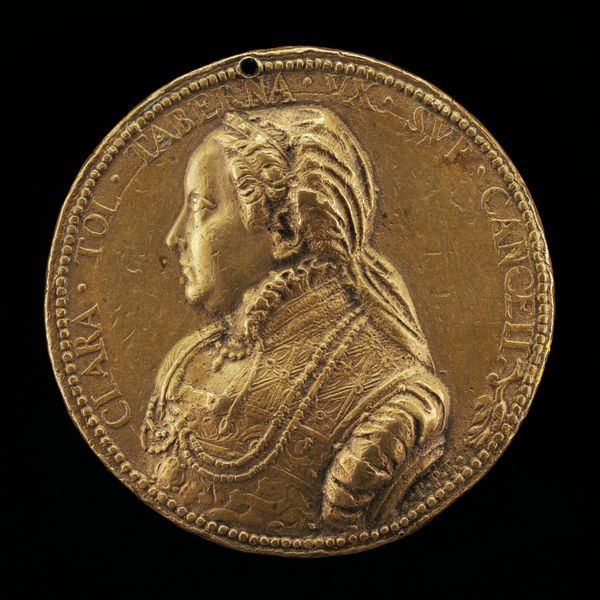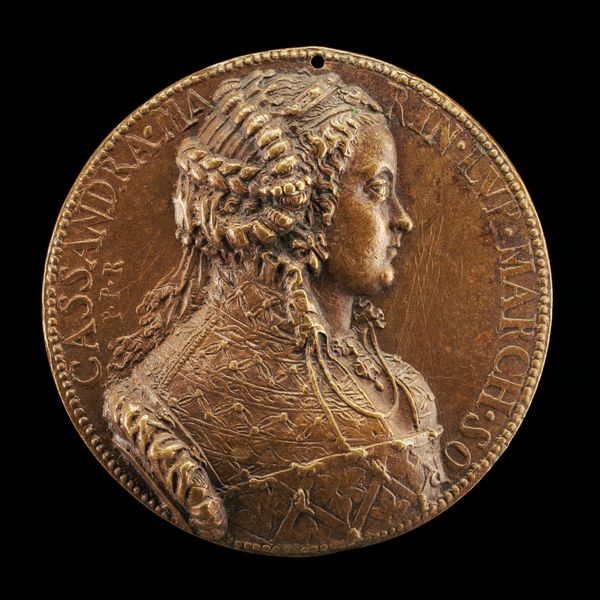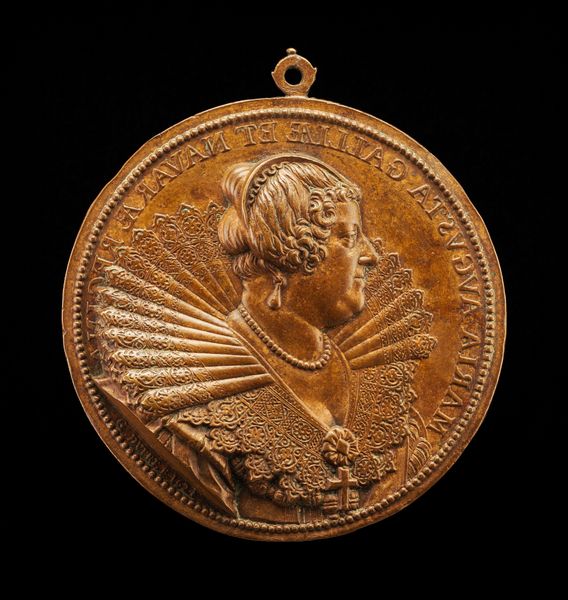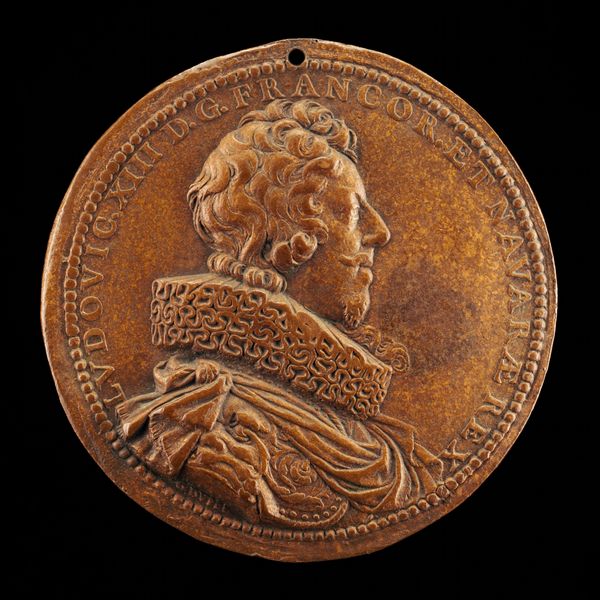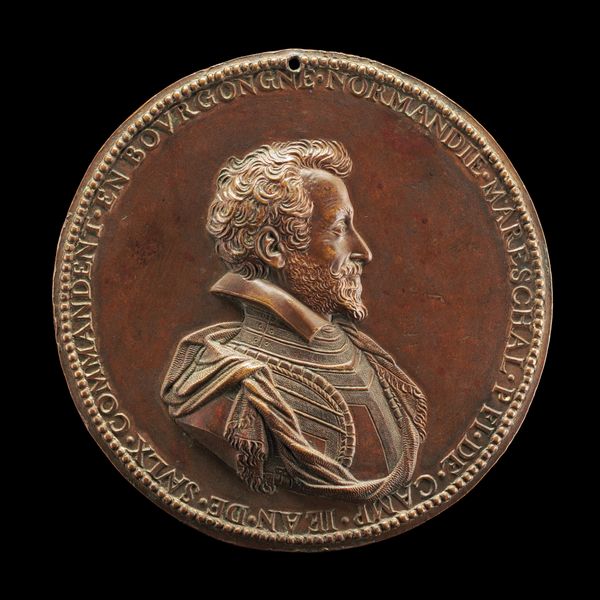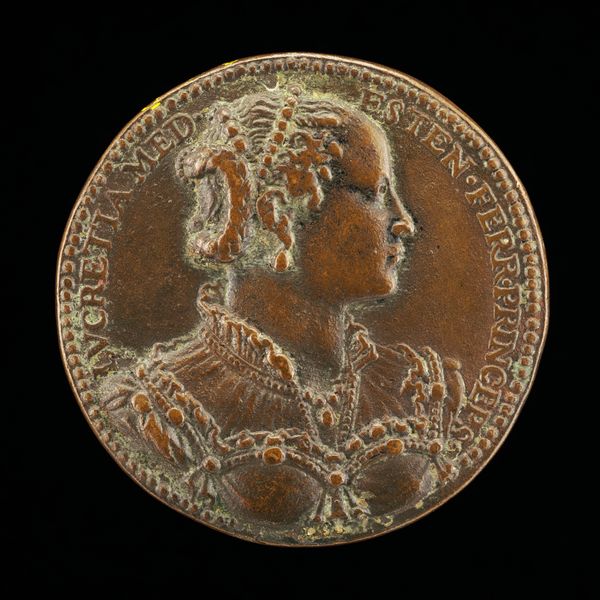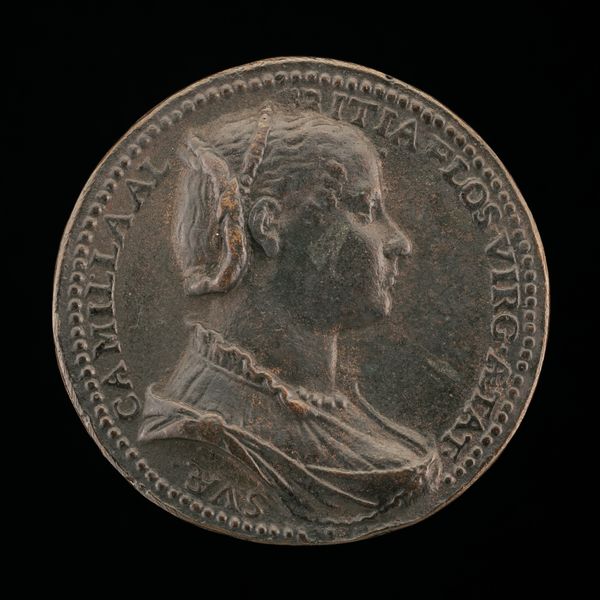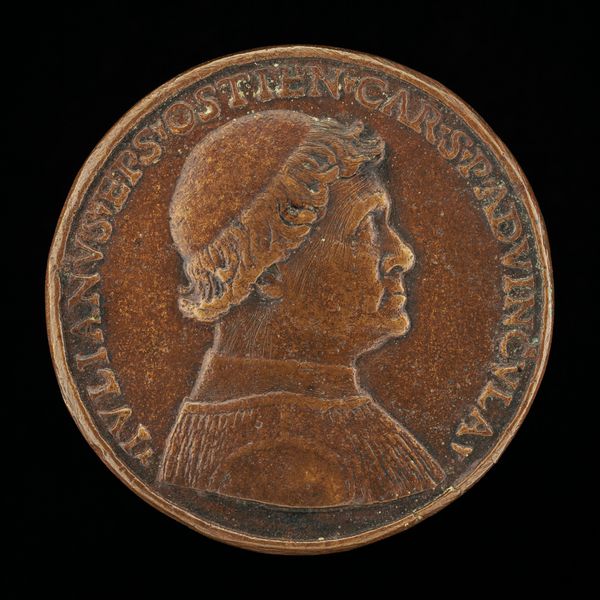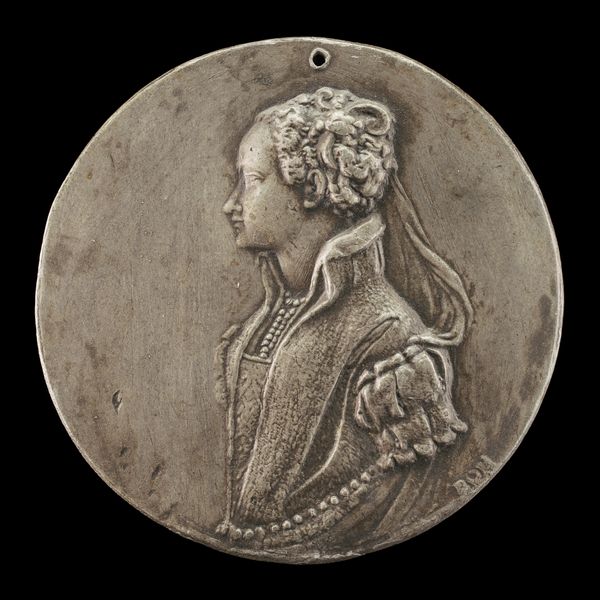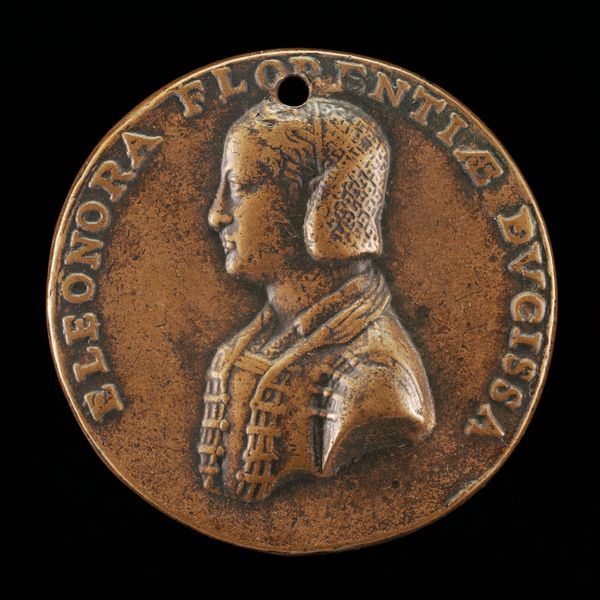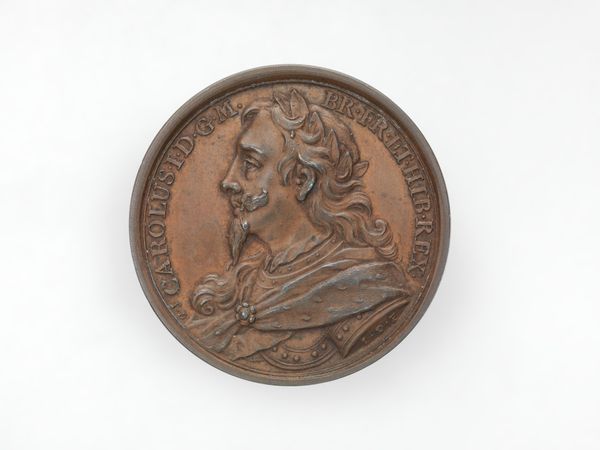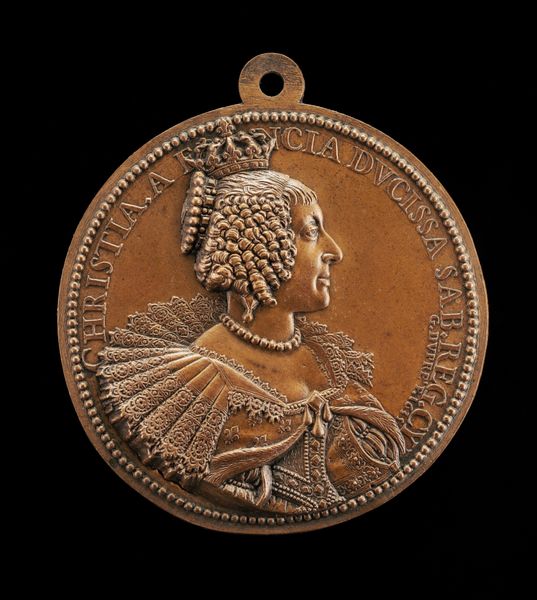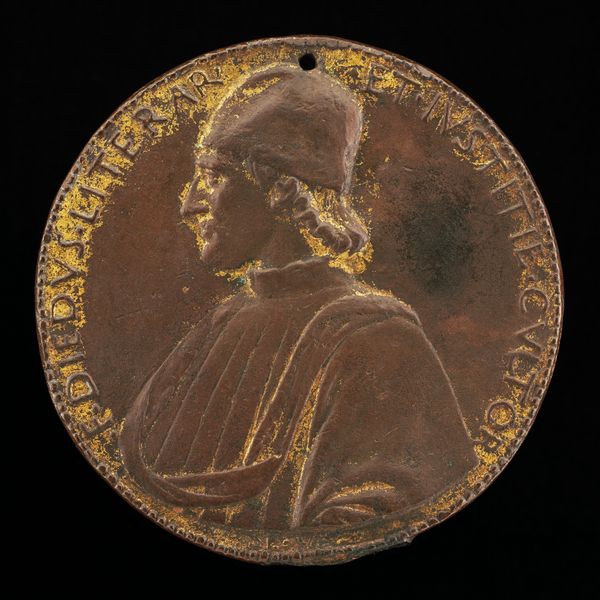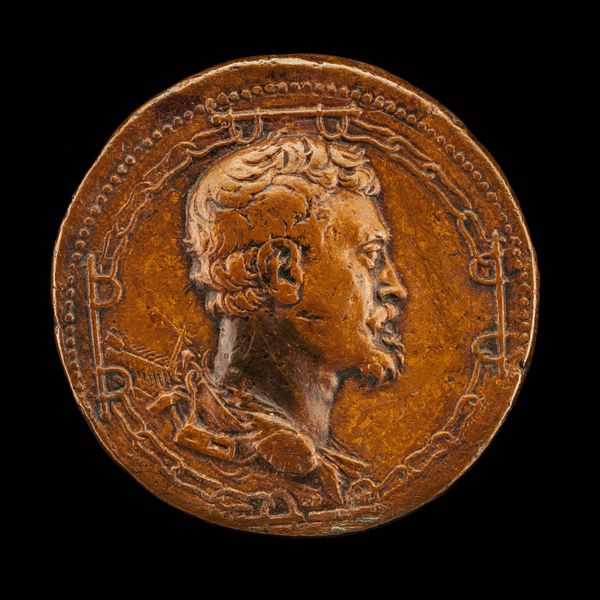![Anne of Austria, 1601-1666, Wife of King Louis XIII of France 1615 [reverse] by Guillaume Dupré](/_next/image?url=https%3A%2F%2Fd2w8kbdekdi1gv.cloudfront.net%2FeyJidWNrZXQiOiAiYXJ0ZXJhLWltYWdlcy1idWNrZXQiLCAia2V5IjogImFydHdvcmtzLzQxODJiYWUxLTliMzYtNGU5Ny04MWQ5LThjMzdjYmU5NGY0OS80MTgyYmFlMS05YjM2LTRlOTctODFkOS04YzM3Y2JlOTRmNDlfZnVsbC5qcGciLCAiZWRpdHMiOiB7InJlc2l6ZSI6IHsid2lkdGgiOiAxOTIwLCAiaGVpZ2h0IjogMTkyMCwgImZpdCI6ICJpbnNpZGUifX19&w=3840&q=75)
Anne of Austria, 1601-1666, Wife of King Louis XIII of France 1615 [reverse] 1620
0:00
0:00
metal, bronze, sculpture
#
medal
#
baroque
#
metal
#
bronze
#
sculpture
Dimensions: overall (diameter): 6.6 cm (2 5/8 in.) gross weight: 85.15 gr (0.188 lb.) axis: 12:00
Copyright: National Gallery of Art: CC0 1.0
Curator: Let's take a look at this bronze medal created in 1620 by Guillaume Dupré. It portrays Anne of Austria, wife of King Louis XIII of France. What strikes you immediately? Editor: The incredible detail, particularly in the lace collar. You can almost feel the texture of the metal, the way the light must play off the surfaces... It’s tactile despite being behind glass, and surprisingly warm. Curator: Warm is a great word. Dupré was known for his portrait medals; he elevated the genre to high art. It’s not just a commemoration, but a political statement. Think about the power structures at play: Who commissions these? Who controls the narrative? Editor: Absolutely. This wasn’t just about artistic expression, but about legitimizing power. Bronze, of course, carries its own connotations – accessible, yet durable, mimicking gold but more democratic. It suggests permanence and a claim to history. What were the conditions for producing work of this scale and detail, not just artistic skill, but how a monarch supports such practice. Curator: And that sartorial display— the farthingale, jewelry and elaborate coiffure aren’t merely decoration. Each element reinforces Anne's status, wealth, and dynastic role, while adhering to Spanish court traditions. Editor: But also how this imagery and how they would function on view. The portability of it; how people might handle it… Curator: Right. Think of the context: Louis XIII’s reign saw France rise as a major European power, even if Anne’s influence was initially questioned. These medals acted as pocket-sized propaganda. Disseminating controlled, positive imagery of the Queen across social spheres. Editor: So even something seemingly straightforward as a portrait medal becomes loaded with considerations of labor, political agendas, the nuances of material and display and also how time alters its reading. Curator: Exactly! The image resonates differently centuries later as we examine it under new light. What began as a tribute of power has become an enduring lens for comprehending cultural history. Editor: Makes you think about the layers embedded in even the smallest artifact! The past echoes into present.
Comments
No comments
Be the first to comment and join the conversation on the ultimate creative platform.
